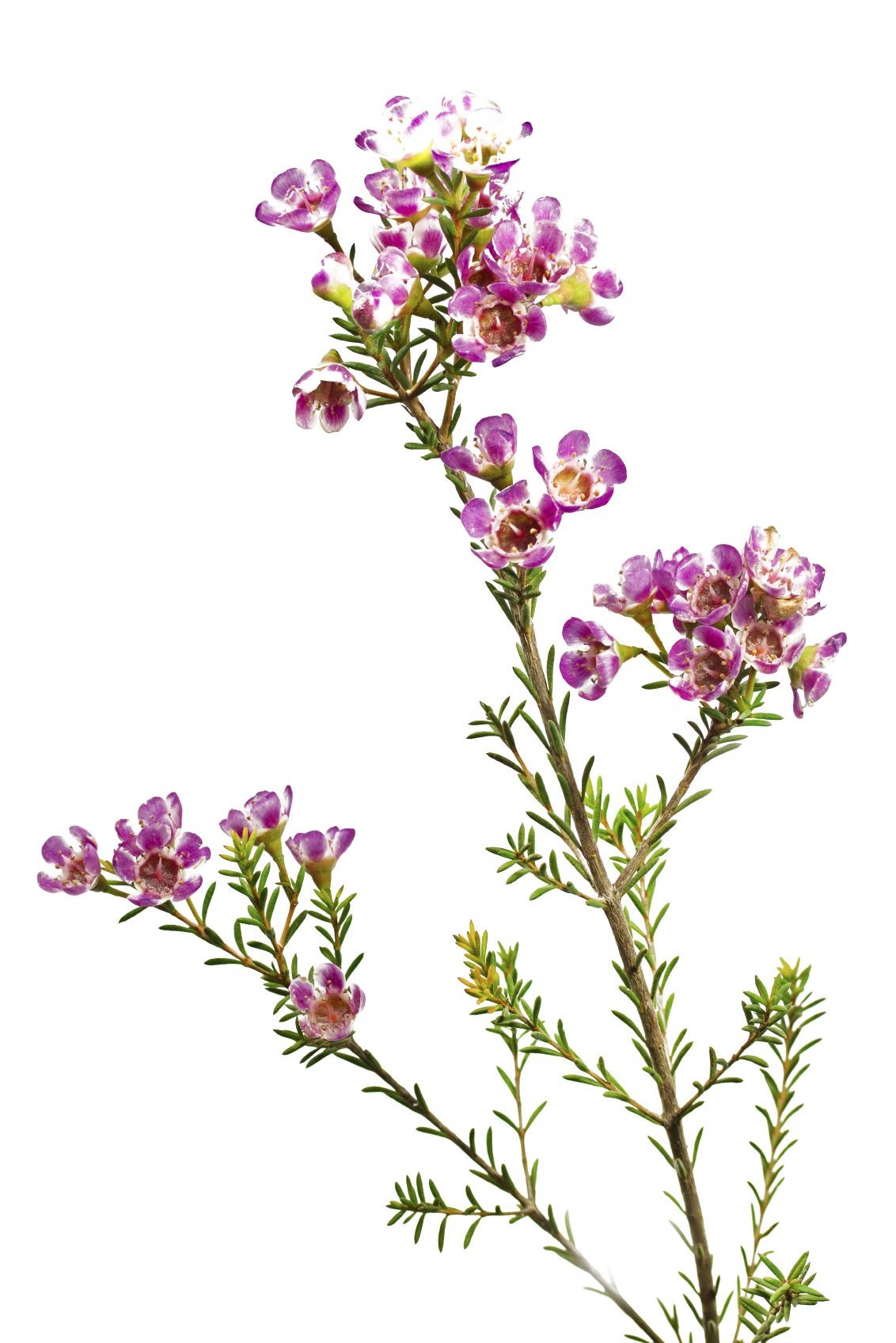Waxflower Plants: Chamelaucium Waxflower Care In Gardens


Waxflower plants are in the Myrtle family and bloom in the flowering dead season of late winter to early spring. These stout performers are all the rage in the cut flower industry because the blooms last in displays for up to 3 weeks. This is one of those “plant it and forget it” varieties of blooming shrubs in most areas. Light pruning, low food and moisture needs, and minimal pest and disease issues are hallmarks of Chamelaucium waxflower care, creating a vital, low maintenance shrub for those of us “lazy gardeners.” Read on for Chamelaucium waxflower info and see if this plant is right for your garden.
Chamelaucium Waxflower Info
Waxflower plants are native to Australia and make excellent border plants in the hot, dry regions of North America. As part of the xeriscape or drought tolerant garden, this perennial can’t be beat for consistent bloom, ease of care and tolerant nature. There are even cultivars recently released that are frost hardy down to 27 degrees Fahrenheit (-2 C.). Chamelaucium growing conditions include full sun, well-draining soil and low moisture. The shrub will produce non-stop blooms, which are perfect for cut flower arrangements. Chamelaucium waxflower makes a fast-growing, thick shrub of 4 to 6 feet in height with a similar spread. Flowers are usually deep purple to red with bright, shiny, berry-like buds arranged in open sprays along the ends of the stems. Foliage is deep green, evergreen and narrow, almost needle-like. Stems are attractively tinted red where leaves stand out against the hue. Blooms may attain ½ inch in diameter and persist for weeks. While the traditional form blooms in winter, there are now several hybrids from which to select with differing bloom periods and tones from pink, red and white, often on the same plant.
Chamelaucium Growing Conditions
Amend soil, if necessary, with plenty of organic matter and till to a depth of 8 to 10 inches for quickest establishment. Ensure the soil is well draining and add sand or other gritty material to enhance percolation. Young plants will need supplemental irrigation as they establish but mature plants can withstand fairly long periods of drought. Be advised that dry conditions may affect production of flowers but the plant will still astound with its rich red stems and attractive leaves. The healthiest plants are produced by mimicking Chamelaucium growing conditions in its native Australia where soils are sandy and moisture is sparse, except during the rainy season. Full sun locations and annual pruning will enhance the form and growth of the plant while encouraging blooms.
Plant Care for Chamelaucium
This is an area where there is almost nothing to write about the plant. Waxflower plants thrive in drier zones but respond well to intermittent watering in the heat of summer. Blooming stems can be cut for floral displays at any time. Chamelaucium needs little extra food. Its native soil is low in nutrients and commercial fertilizers might actually harm the plant. Use organic mulch as part of Chamelaucium waxflower care, to protect the root zone from cold, prevent weeds and gradually release needed nutrients. One area of plant care for Chamelaucium to mention is pruning. Cut back the stems by 1/3 after flowering to encourage new shoots, which bear the next season’s blooms. This forces tighter, more compact shrubs and helps keep the center of the plant open for light and air.
Sign up for the Gardening Know How newsletter today and receive a free copy of our e-book "How to Grow Delicious Tomatoes".

Bonnie Grant is a professional landscaper with a Certification in Urban Gardening. She has been gardening and writing for 15 years. A former professional chef, she has a passion for edible landscaping.